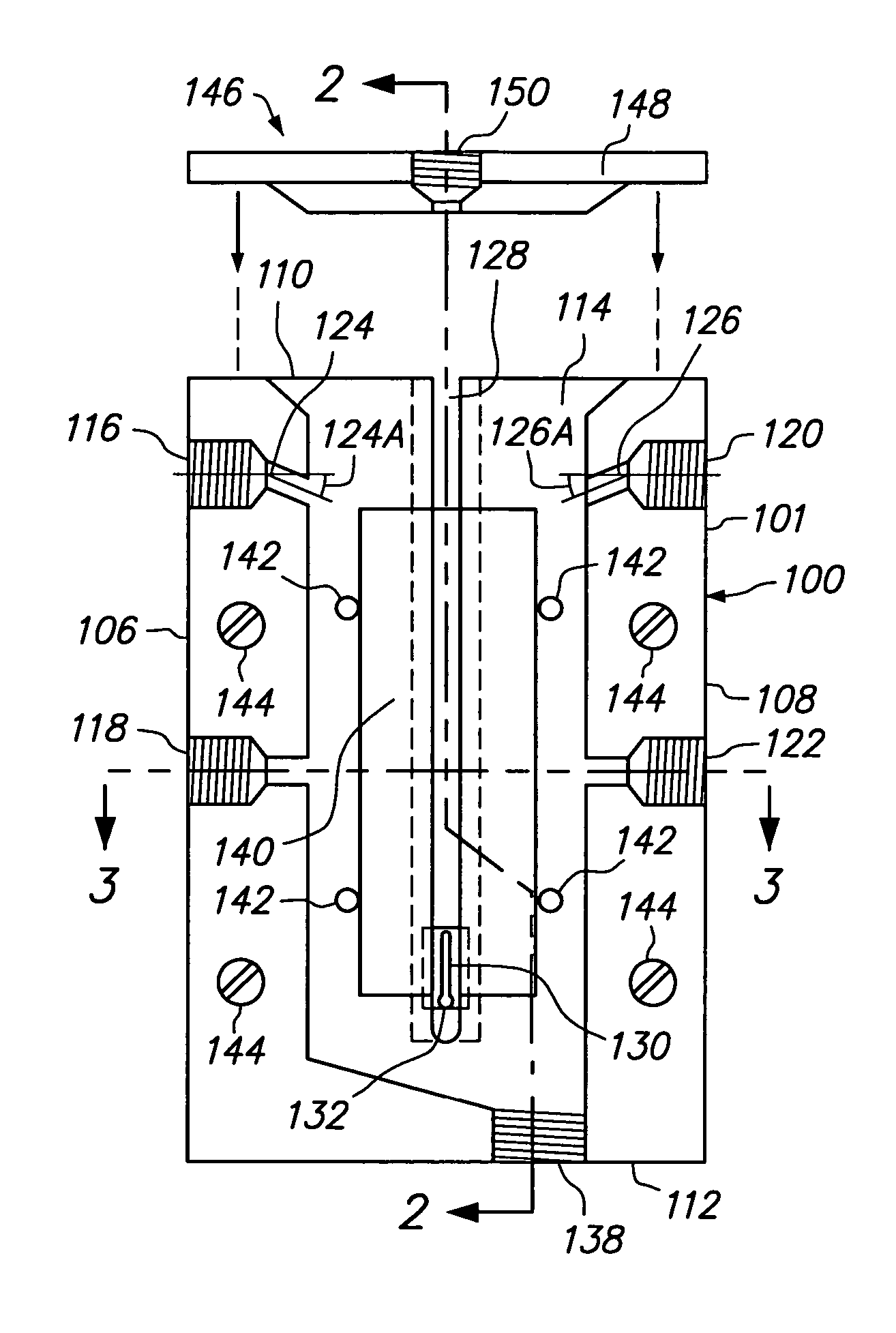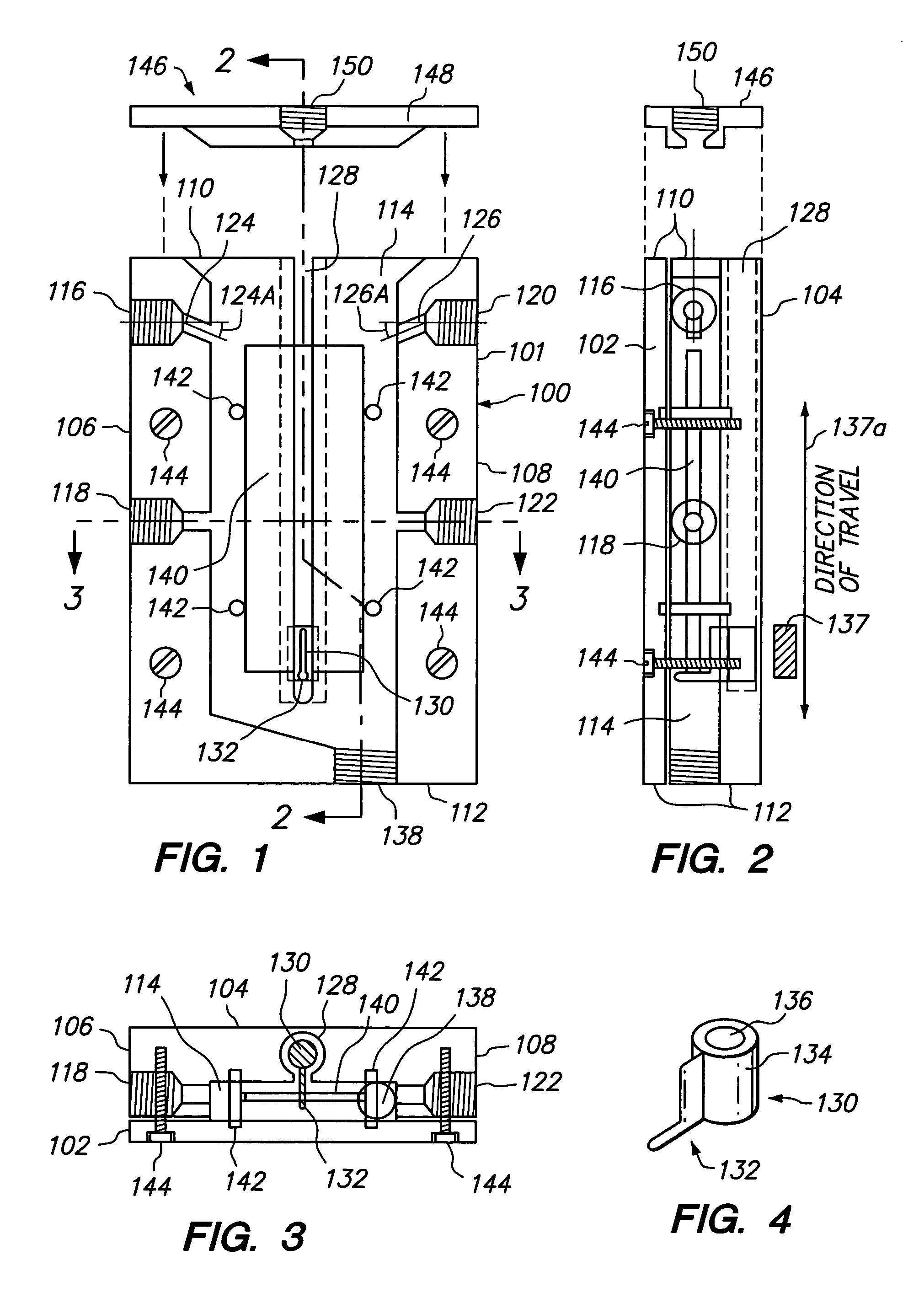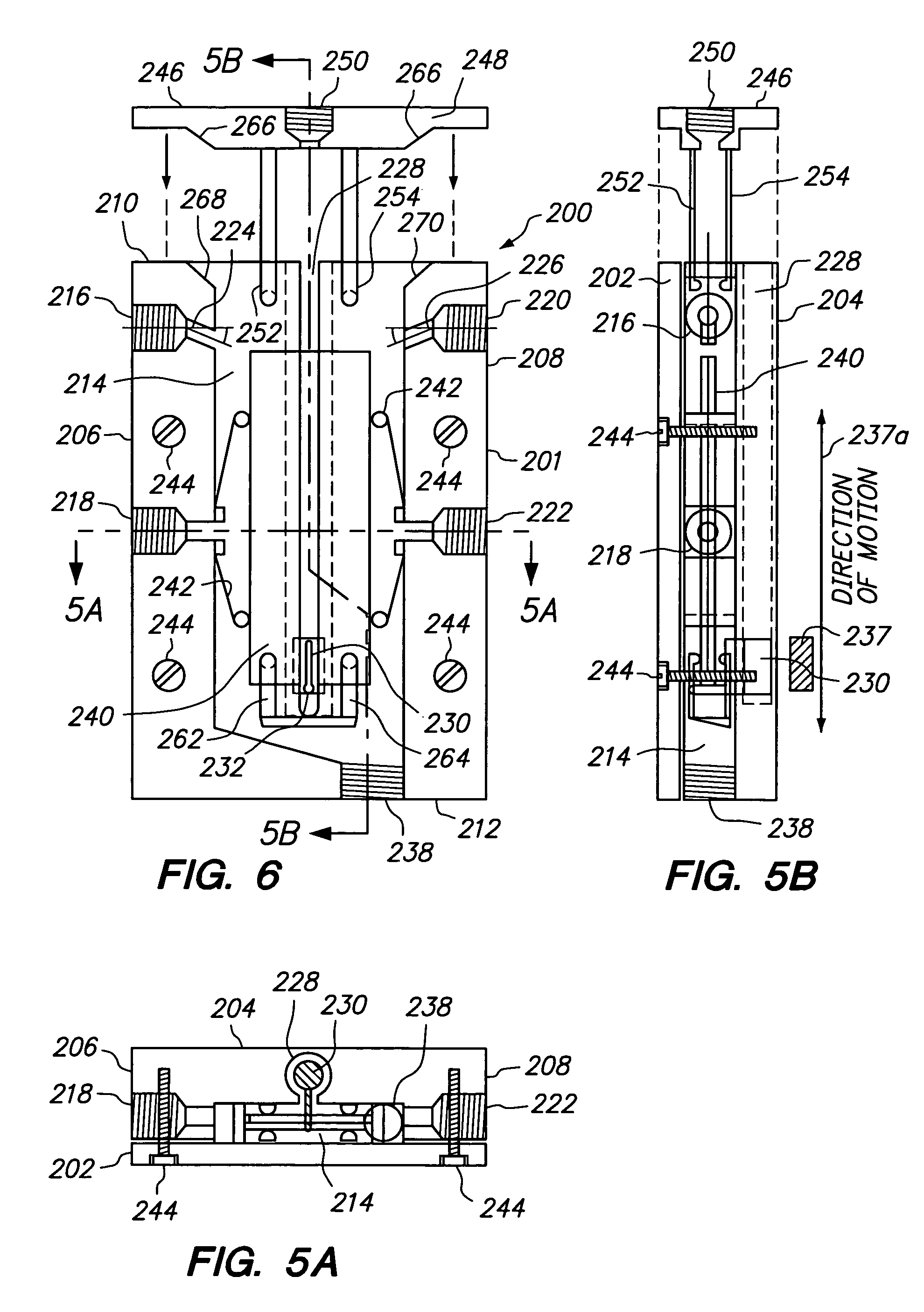Apparatus for substrate handling
a substrate and apparatus technology, applied in the field of apparatus for substrate handling, can solve the problems of poor reproducibility, overall degraded microarray performance, poor spatial uniformity, etc., and achieve the effect of eliminating the formation of droplets, drying the substrate surface, and eliminating the formation of fluid droplets
- Summary
- Abstract
- Description
- Claims
- Application Information
AI Technical Summary
Benefits of technology
Problems solved by technology
Method used
Image
Examples
example
[0147]The invention is demonstrated further by the following illustrative example. The objective of this example is to automatically wash and dry microarray substrates involved in hybridization reactions in a consistent and reproducible manner. Subsequent to the hybridization reactions, the microarray substrates are subjected to a sequence of multiple wet and dry processes to achieve the removal of undesired hybridization fluids, target polynucleotide material, wash residues and related solid and liquid waste products.
[0148]The following protocols are followed depending on the manner in which the microarray substrate is prepared (in situ synthesis, or whole oligonucleotide or cDNA deposition).
[0149]
in situWhole Oligo and cDNAProtocol StepSynthesizedDepositionDisassemblyDisassemble quickly inDisassemble quickly inWash60° C. 6X SSC + 0.005%room temperatureTX-102.0.5X SSC + 0.01% SDS.Wash #1Wash for 10 minutes inWash for 5 minutes inroom temperature 6Xroom temperatureSSC + 0.005% TX-10...
PUM
| Property | Measurement | Unit |
|---|---|---|
| temperature | aaaaa | aaaaa |
| angle | aaaaa | aaaaa |
| angle | aaaaa | aaaaa |
Abstract
Description
Claims
Application Information
 Login to View More
Login to View More - R&D
- Intellectual Property
- Life Sciences
- Materials
- Tech Scout
- Unparalleled Data Quality
- Higher Quality Content
- 60% Fewer Hallucinations
Browse by: Latest US Patents, China's latest patents, Technical Efficacy Thesaurus, Application Domain, Technology Topic, Popular Technical Reports.
© 2025 PatSnap. All rights reserved.Legal|Privacy policy|Modern Slavery Act Transparency Statement|Sitemap|About US| Contact US: help@patsnap.com



